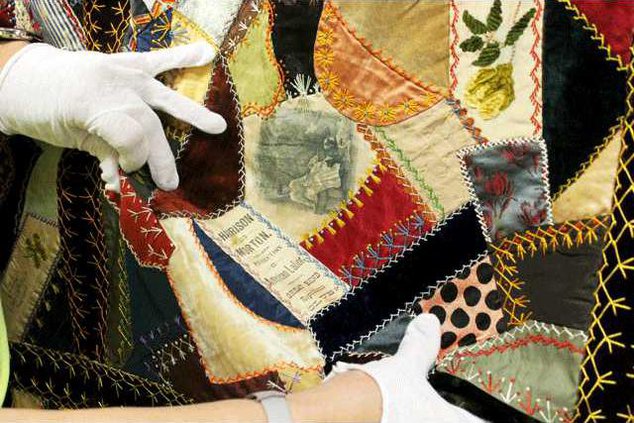How to properly store, hang and handle and antique quilt
Quilts should always be stored horizontally. Keep folds loose, pad with acid-free paper.
When hanging a quilt, hand stich a sleeve to the back, and hang by the sleeve.
Always handle a quilt with clean hands. Wear clean gloves when handling an antique quilt.
The Barton County Historical Society museum will host a quilt show over June Jaunt weekend and through the month of June.
“With the barn quilt theme, we thought, What a perfect time to do one,” said Director Beverly Komarek. Museum volunteers have been busy unrolling and hanging a selection of 21 quilts from the museum’s permanent collection.
These are quilts donated to the museum by Barton County families over the years. The designs cover the gamut of traditional quilt patterns to the whimsical and crazy quilts popular during the Victorian era and later in the early 1900s. Designs like Dresden Plates, Indiana Puzzle, Snail trail, and variations on Sun Bonnet Sue and her friends. Some carry patches with identifying information, but others remain a mystery.
Many have interesting historical features. Reds were tricky before the 1920s. Some, treated with a process called “Turkey red,” held their colors, while other less expensive fabrics claimed to be but were not, and faded to a creamy beige over the years. Two quilts, a Drunkard’s Path design and a Goblet design, both from the Civil War era, will be on display, which illustrated this problem.
One, an Indian Hatchet design, was made out of red wool bandages from World War 2, issued by the Navy in 1944, and black wool slacks from the 1950s Lined in a acrylic and polyester plaid. According to museum records, a husband gave it to the Salvation Army, and the SA called them. They called Komarek, who went to the shop and saw it hanging up with a price tag of $250. She couldn’t afford to buy it, she said--but was told that it was priced to keep it safe for her.
Museum volunteers researched its origin. The widowers name was known, making it possible to track down his wife, Katherine Munoz’s history and how it was pieced together. When the state had an all-Kansas quilt show, the museum received a loan request from the state historical society.
“These quilts, while works of art, were made to be used,” Komarek said. They are hand quilted. Pat Teel, a museum volunteer, notes the difference.
“Between the stitches, it’s a little more puffy,” she said. She has a quilt made by her mother that is hand quilted well enough to turn over and show off the back side, she said.
Another notable quilt with a ‘racy’ past will also be on display. Barbara McPherson, Great Bend, had a lot of wild and crazy t-shirts from her race car driving days. After her death four years ago, a friend took her t-shirts and made a quilt for her husband, Brock McPherson. He has generously allowed the quilt to stay at the museum throughout the summer.
The show will be ready starting June 1. There is much that goes into preparing the quilts for display, Komarek said, and they are very heavy. The last quilt show the museum hosted was when the Ray Schultz Memorial Library was dedicated in 2006.





